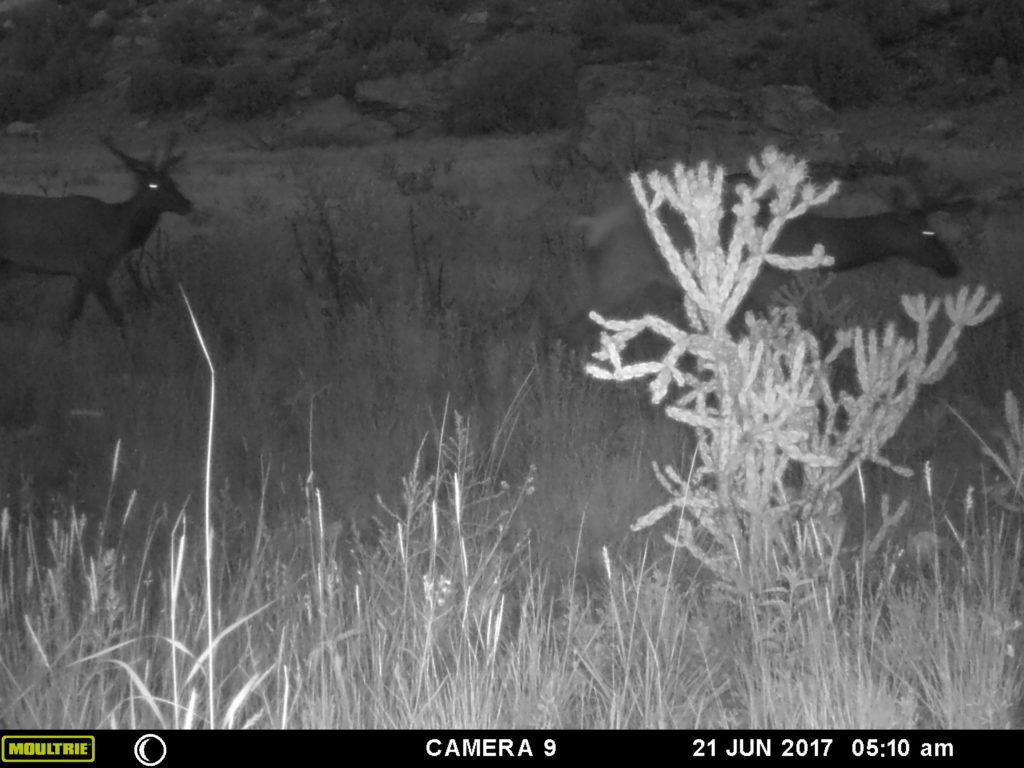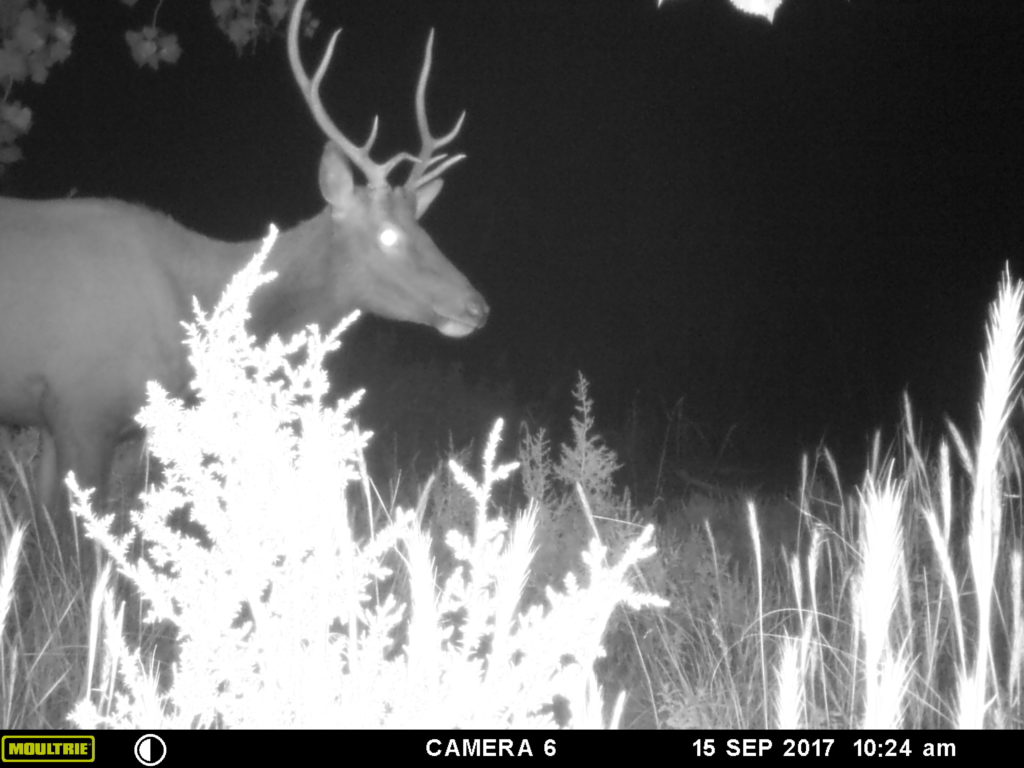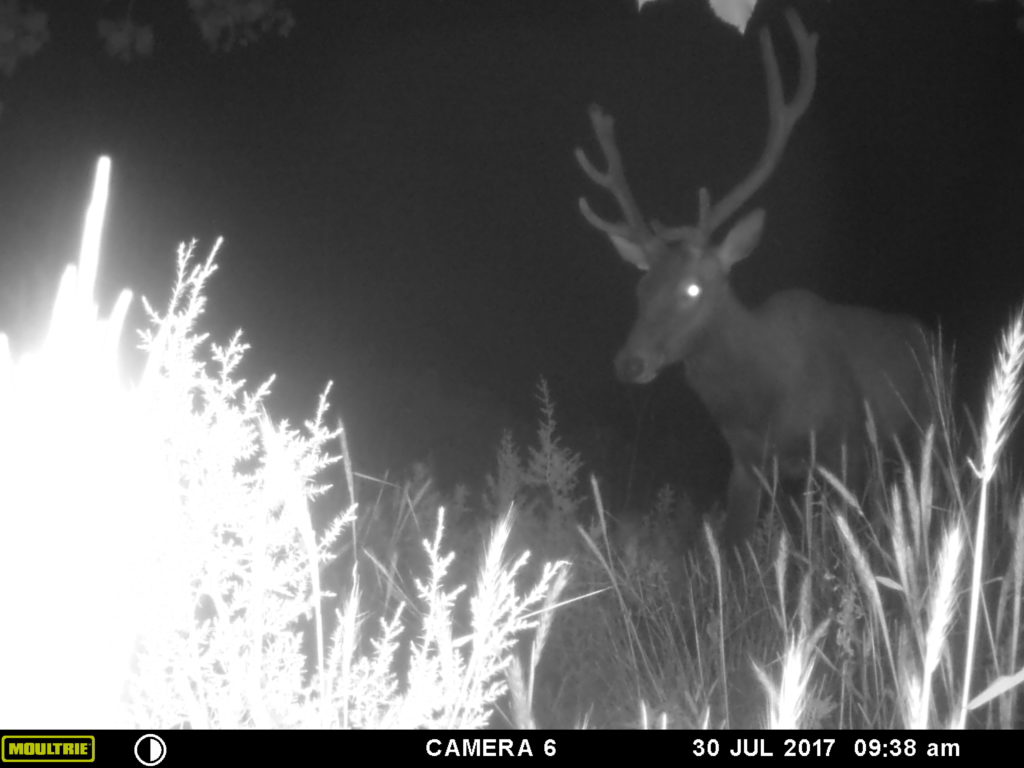Research
Southeast Colorado Elk
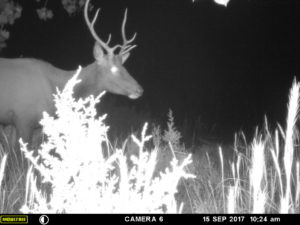
Although they are now associated with mountains and sub-alpine environments, before westward European expansion elk were creatures of the prairie. Few populations remain in these lower elevation ecosystems, but Colorado is fortunate to have a herd in the canyon country on and around the Comanche National Grassland.
Little is known about these animals, however. Their distribution, population and movements have never been studied. To minimize conflicts with privately owned land Colorado Parks and Wildlife allows them to be hunted from September through January with no bag limits or restrictions. With that, conservation dollars and management priorities are focused on the herds of the western slope. But these animals belong on the prairie, and there is enough public land on the Comanche to support large herds of elk. All visitors and outdoor recreationists on Colorado’s public prairies should be able to see elk in their native historic habitat.
Before any meaningful conversation about management of these prairie elk can be started, more information is needed. Grasslands Unlimited is working to collect that information through an extensive network of camera traps throughout the Comanche National Grassland. In partnership with the Geographic Information Systems department of the University of Colorado, we are seeking a better understanding of when, where, and how the elk herds utilize the public lands of the Comanche National Grassland, and hope to begin the process of managing these animals differently to allow their expansion onto the National Grasslands.
This research is supported in part by a grant from the Bass Pro Shops and Cabela’s Outdoor Fund.
Urban Bat Research
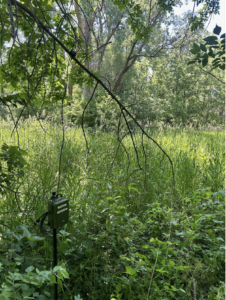 Our habitat restoration project at Cottonwood Creek Preserve provides a unique opportunity to gather data about the ways that urban wildlife interact with their habitats. One of the species we are actively researching are bats. Do they use small parcels of habitat? How small is too small before some species won’t benefit from restoration efforts? What times of year are small parcels important? What can be done at a microhabitat level to improve bat conservation? These are the questions we’re digging into through our bat research at CCP. We are partnering with researchers at the University of Nebraska at Omaha to gather acoustic data from our preserve over the course of several years to track the species that use small urban preserves, and the ways that they use them. Through this project we hope to inform management of marginal and unused urban spaces to put them to work for wildlife!
Our habitat restoration project at Cottonwood Creek Preserve provides a unique opportunity to gather data about the ways that urban wildlife interact with their habitats. One of the species we are actively researching are bats. Do they use small parcels of habitat? How small is too small before some species won’t benefit from restoration efforts? What times of year are small parcels important? What can be done at a microhabitat level to improve bat conservation? These are the questions we’re digging into through our bat research at CCP. We are partnering with researchers at the University of Nebraska at Omaha to gather acoustic data from our preserve over the course of several years to track the species that use small urban preserves, and the ways that they use them. Through this project we hope to inform management of marginal and unused urban spaces to put them to work for wildlife!
Spotted Skunk
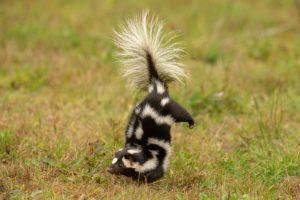
Grasslands are vital for the conservation of many species, including rare species such as the plains spotted skunk. Historically, plains spotted skunks were believed to be highly associated with prairies, brushy areas, and cultivated land. This species has been in decline since the 1940’s possibly due to the introduction of clean farming, which promotes maximum land use and the removal of important tree plantings such as shelterbelts or windrows. Shelterbelts are “environmental buffers” that are planted in rows and provide a varying canopy structure made up of trees and shrubs to reduce soil erosion in areas with high winds. Incidentally, they also provide shelter for spotted skunks and protection from predators such as great-horned owls. Another potential cause for the decline of the plains spotted skunk was the introduction and intensive use of pesticides such as DDT beginning in the 1940’s.
Spotted skunks are not your average skunk. They are less than half the size of a striped skunk (1/2 to 4 lbs.), perform handstands as a defense mechanism prior to spraying a foul-smelling musk, and are excellent climbers. Nebraska’s latest confirmed detection of a spotted skunk was a roadkill found in Cherry County in 2017. In cooperation with the Nebraska Game and Parks Commission, researchers at the University of Nebraska at Omaha (UNO) have taken on the task of surveying for spotted skunks in Nebraska due to the unknown population status of this species in the Great Plains. We are interested in determining where populations remain in Nebraska and documenting which habitat types spotted skunks are utilizing.
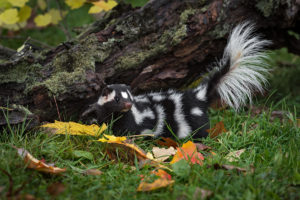 We are searching for private landowners and conservation organizations located throughout Nebraska that are interested in volunteering to help us locate plains spotted skunk populations! Participants must register to volunteer, monitor camera sites independently, and follow camera trapping guidelines provided by UNO in order to participate in this project. Grasslands Unlimited will provide all camera equipment and partner in the monitoring efforts.
We are searching for private landowners and conservation organizations located throughout Nebraska that are interested in volunteering to help us locate plains spotted skunk populations! Participants must register to volunteer, monitor camera sites independently, and follow camera trapping guidelines provided by UNO in order to participate in this project. Grasslands Unlimited will provide all camera equipment and partner in the monitoring efforts.
Interested participants should register at: https://bit.ly/3tyqxZ0. If questions arise, please reach out to April Sperfslage (asperfslage@unomaha.edu). We are looking forward to answering your questions and working with you!
Download Landowner Guidelines
